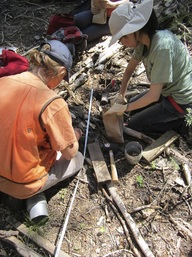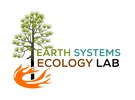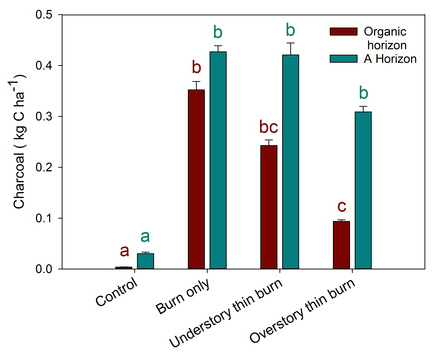 When fire burns in a forest, some of the plant material is heated in the absence of oxygen. This process creates something called black carbon (you can read more about that on Jessica Miesel’s page). This by-product of fire has garnered a lot of interest because it is a stable form of carbon and can stick around in the ecosystem for a long time. One part of the black carbon continuum is charcoal. It is similar to the nuggets you put in your BBQ, but the pieces are a lot smaller. In a recent paper led by Morgan Wiechmann, we quantified the amount of charcoal produced in the prescribed burning treatments in the Teakettle Experiment. We set out to test the hypothesis that more charcoal would be produced from large logs than would be produced from small sticks. We also wanted to figure out how much charcoal in general prescribed burning produced because we assume when making fire emissions calculations that if the dead wood was there before the fire and is gone afterward, that it ended up as carbon dioxide in the atmosphere. To test the hypothesis, Morgan and her field crew sampled along logs and along a transect running perpendicular to the logs. She sampled the organic matter (dead leaves) and top 5 centimeters of the mineral soil. Then after hand-picking out all of the pieces bigger than 2 mm, she ran an analysis to compare the amount of charcoal near the logs and the amount away from the logs (where the small sticks are). As it turns out, we were wrong and rejected our hypothesis. We didn’t find any difference in the amount of charcoal near or away from the logs. However, we did find that the burning treatments did have more charcoal than the unburned control treatments. As you can see in the figure, the mineral soil (A horizon) had more charcoal than the organic layer. From a carbon storage perspective, this is a good thing because it means the charcoal is getting incorporated into the soil where it is likely to stay for a while. The other thing that was interesting is the amount of charcoal in the unburned control. Teakettle last had a natural fire in 1865! This result shows us charcoal can stay in the system for a good long time.
Overall, charcoal carbon at Teakettle accounts for less than 1% of the total carbon in the system. While not much, even accounting for this little bit helps improve our understanding of how disturbances, such as fire, impact the forest carbon cycle. This work was funded by a Joint Fire Science Program Graduate Research Innovation Award to Morgan Wiechmann
0 Comments
Your comment will be posted after it is approved.
Leave a Reply. |
Details
Archives
October 2023
Categories
All
|


 RSS Feed
RSS Feed